The night was quiet but the morning was ridiculous, with people banging the walls and stomping through the hallways.
We had booked an afternoon tour of the glacier via helicopter, but since the weather was nice, we thought we'd walk up and have a look at it first. We were the first ones to arrive and the sun hadn't entered the deep valley yet.
We first walked along a path lined with dense bush, which suddenly opened up to a giant barren valley. According to the signs, the glacier had extended almost to the parking lot in 1867, and most of the forest we had just walked through was new since then.

Updates were apparently given daily at 10:00 am, so this was still yesterday's report.
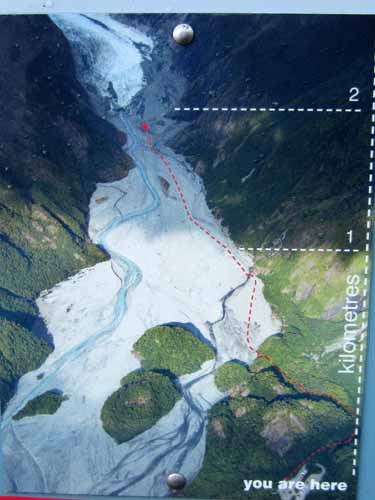
This photo gives a sense of scale, and also how far the glacier has retreated (with the "you are here" being close to where the glacier had extended to).
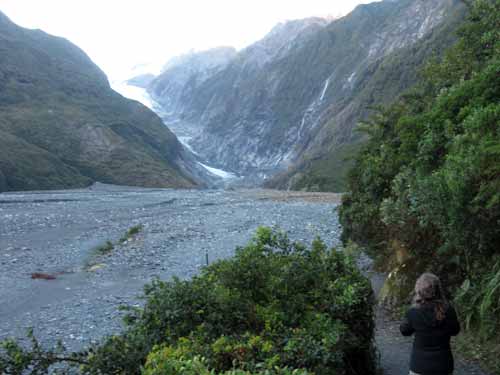
Leaving the forest
We made our way across the expansive rocky terrain, following the path marked by yellow-tipped posts. Helicopter noise echoed throughout the valley as the morning flights began, either dropping people off to hike or to just give an areal tour.
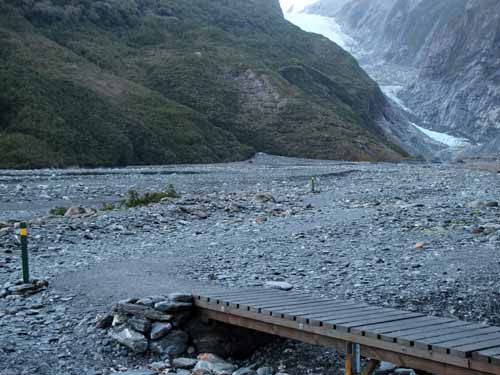
Following the markers
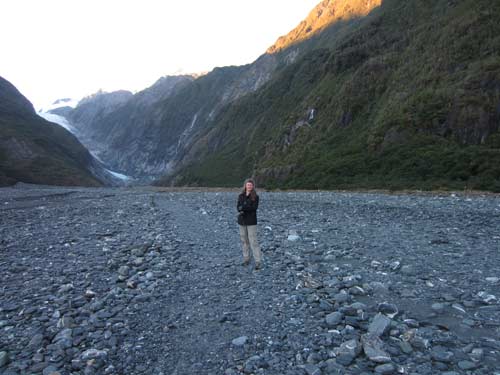
Feeling like the middle of nowhere
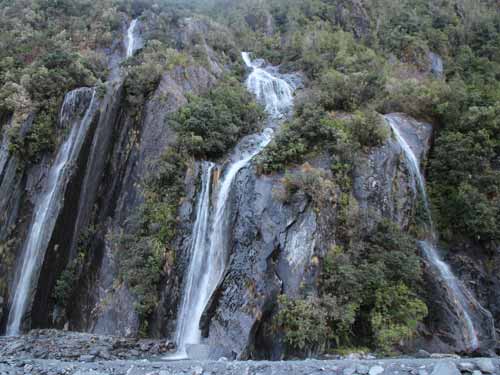
Waterfalls streamed from the hills.
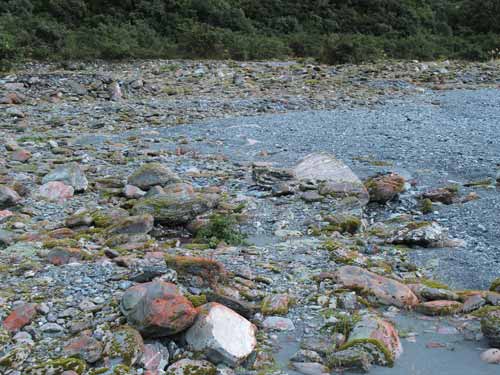
There was a very clear line where the forest had started to grow back...
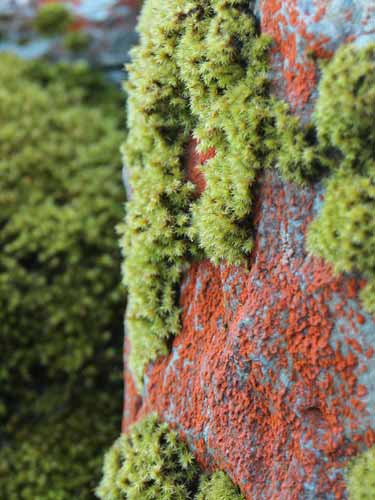
... starting first with the mosses and algaes...
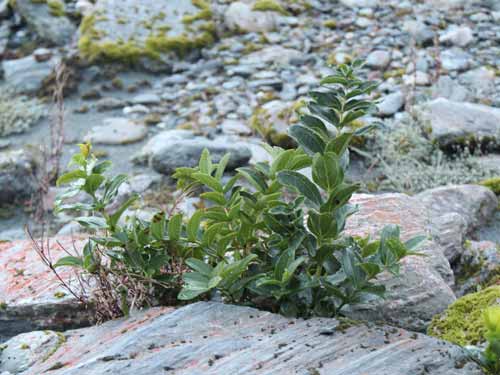
... then extending to the small plants. If the glacier doesn't reclaim this land, this too will one day be dense forest again.
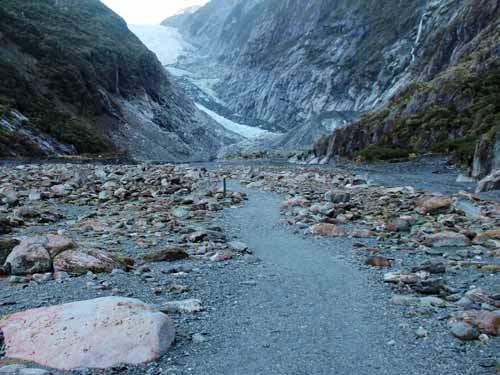
Getting closer...

... almost there, looking back down at the path we just climbed.
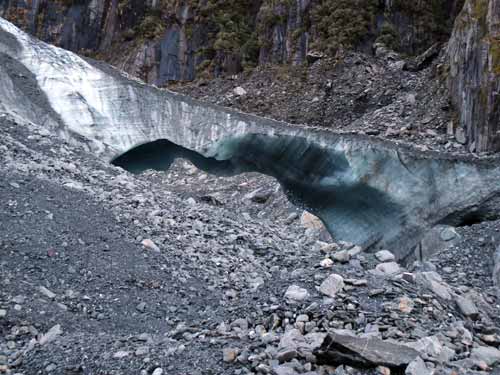
An ice bridge
We reached the viewing point and then could go no further, for safety reasons. The area was roped off and signs were posted containing newspaper articles of past tragedies. Soon after, a ranger appeared and radioed back his 10:00 am report of the valley conditions.
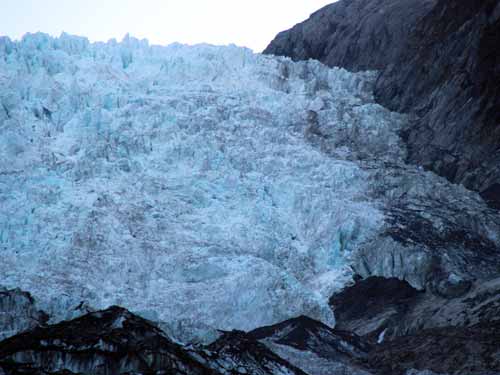
Presenting... Franz Josef glacier
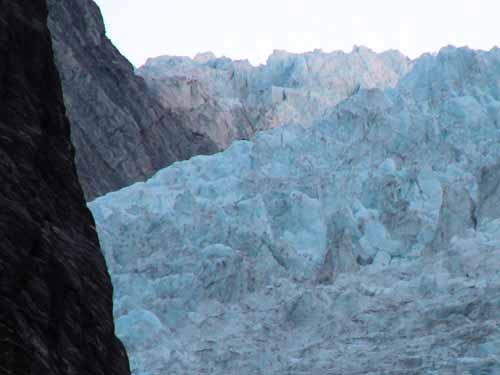
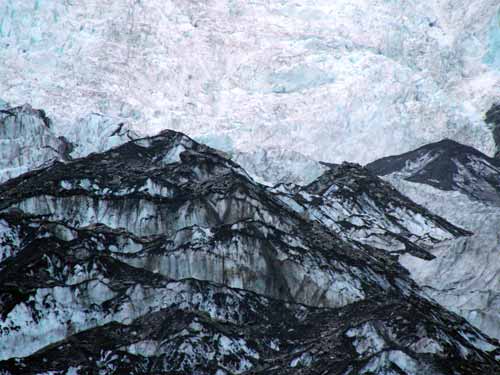
Given all the dirt, it was sometimes hard to tell what was ice and what was rock.
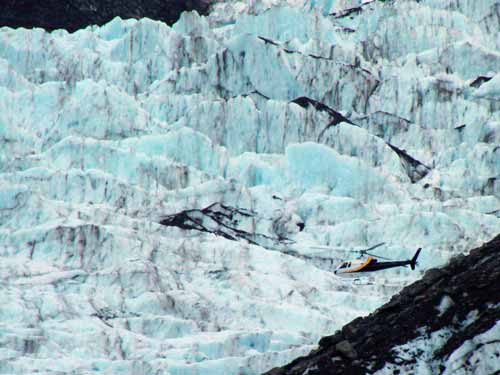
A helicopter flies in low to drop off another set of hikers.
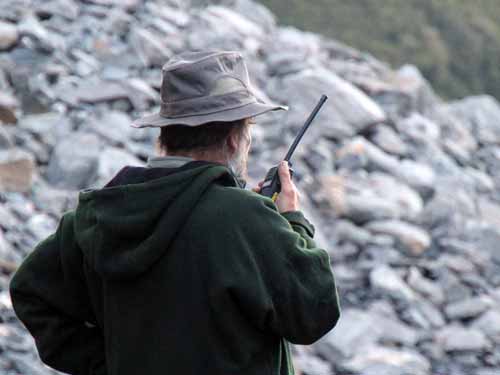
The ranger makes his call.
We spoke with the ranger briefly and he pointed out that the ice bridge that we saw on the way up would probably be gone in a couple days. We decided that made it somewhat of a short-lived celebrity and therefore had to have our pictures taken with it.
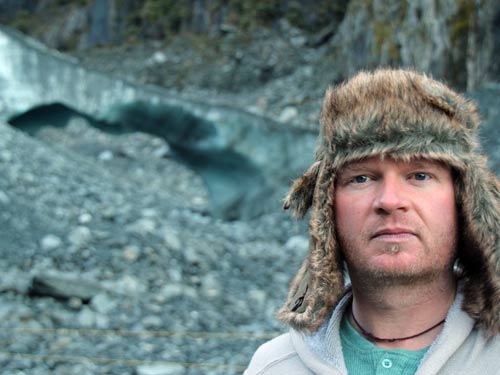
Our brush with fame
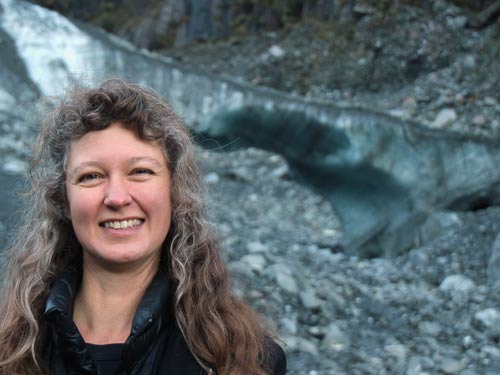
Slowly the sun began to creep into the valley, changing the color of everything.
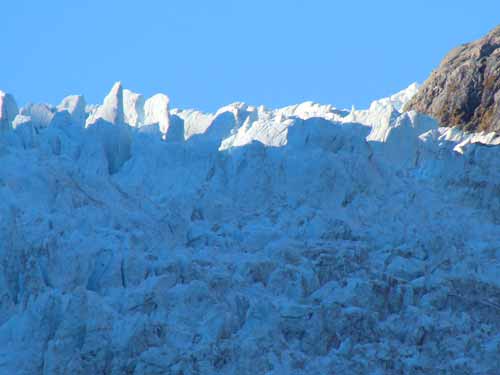

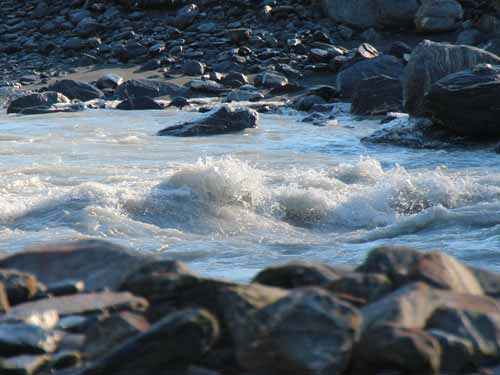
The murky grey color of the water is caused by 'rock flour' (fine rock particles ground away by the glacier as it flows).
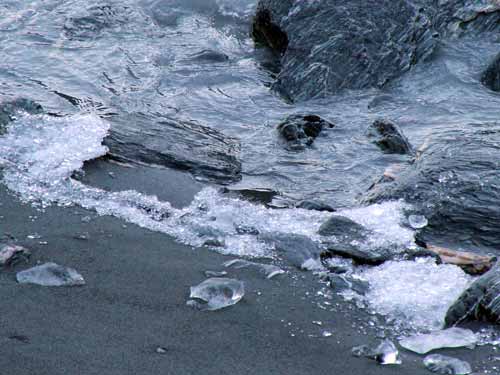
Ice lined the shores.
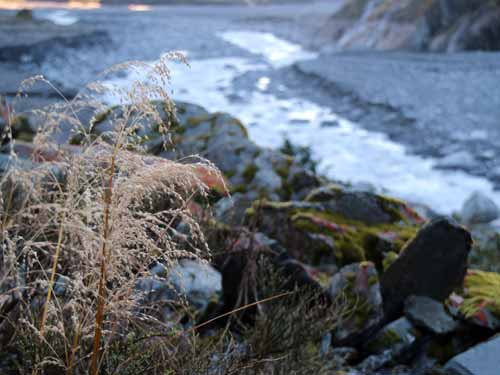
The river is prone to dramatic floods when large pieces of ice collapse at the glacier face.

Ice or rock??
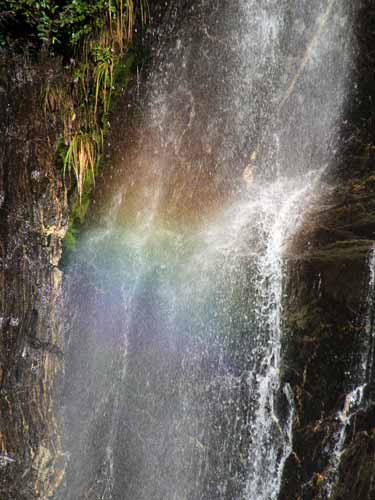
Numerous rainbows danced in the falls.

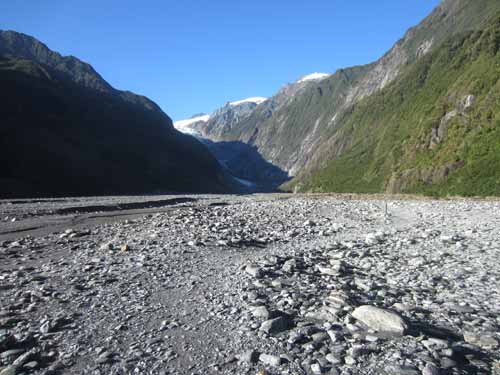
A view back toward the glacier, with the valley now bathed in the morning light.

The parking lot was quite crowded when we returned and people vultured for our spot. We left quickly and headed back to town. Mist rising from the water flowed over the road.
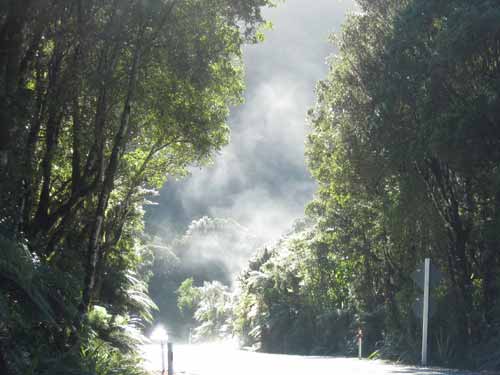
Mist frequently occurs here when the cold glacier water meets warm moist air.

